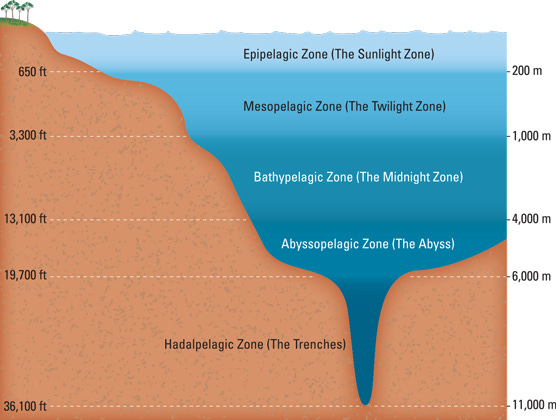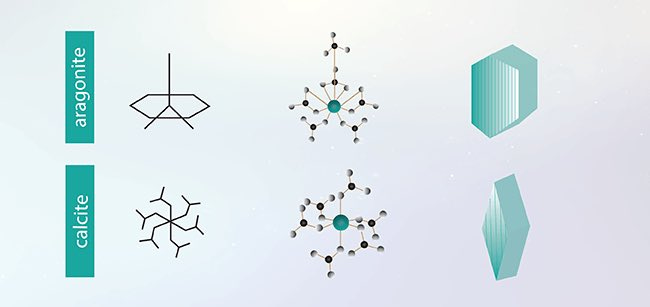[Q&A] Dr. Tricia Thibodeau
You should care about sea butterflies, but don't take it from me!
SpongeBob’s nemesis might be the first thing that comes to mind when someone mentions plankton. The conniving owner of the Chum Bucket is a cartoon version of a very real type of zooplankton called a copepod. While copepods may be the most popular & recognizable type of plankton, they are in my opinion not nearly as interesting as this week’s newsletter topic: sea butterflies.
There are two kinds of plankton: phytoplankton, which are plants, and zooplankton, which are oceanic animal drifters (aka they can’t actively swim against a current like fish can). A particularly interesting kind of zooplankton is the pteropod (TERR-oh-pod), microscopic aquatic snails known as ‘sea butterflies.’ They are found in northern and polar waters & are important as both grazers of phytoplankton and prey for higher trophic levels. They are also quite sensitive to environmental change.

These zooplankton eat & grow year-round, and their health is affected by sea surface temperatures, sea ice extent, and carbonate chemistry, especially ocean pH. In fact, pteropods’ responses to environmental variations are key for predicting future effects of climate change on regional carbon cycling, according to a 2019 paper by Thibodeau and colleagues. Currently a postdoctoral researcher at University of Rhode Island, Dr. Tricia Thibodeau has been studying pteropods for years: in fact, I worked in her lab sorting plankton samples when we were both students at William & Mary (I as an undergrad and she as a PhD candidate). This week, I interviewed Tricia to determine why plankton, specifically pteropods, are important to humans and how ocean acidification (as well as climate change as a whole) is affecting them.
Pteropod’s uniqueness
Diana: I feel like not as many people know about pteropods, at least in the context of plankton. Are they more abundant than other types of zooplankton? What different parts of the world are they found in, and how deep are they found?
Tricia: Pteropods can definitely be one of the more abundant zooplankton in certain regions of the ocean. In the polar regions, they're particularly numerous, hence why most of the published research has been from either the Arctic or the Southern Ocean. Zooplankton in general are very patchy in terms of their distribution. For example, there's been quite a lot of work that's come out of the Pacific Northwest & Arctic regions because the shelled species of pteropods have been identified as a primary food source for salmon. Scientists want to determine just how abundant they are in case their populations are declining, which could of course affect the salmon populations. But along the Antarctic peninsula where I study, pteropods are the third most abundant species of zooplankton, behind the Antarctic krill and salps, large, gelatinous zooplankton that are growing in numbers as Southern Ocean waters warm.

I should mention that there are shelled pteropods as well as non-shelled pteropods (gymnosomes), which mostly only eat the shelled pteropods.
D: Oh, that’s so interesting.
T: Yeah, so if shelled pteropods are abundant, usually you find that non-shelled pteropods are too. There is a big expedition called the NASA Exports Program, which Deb Steinberg, my PhD advisor, was involved in. It’s trying to document all the different biological processes that happen in the ocean and relate them to satellites so that we could have potentially measure those processes from space. They've identified one region in the North Atlantic and one region in the Pacific Ocean for comparison, thinking that in springtime the Pacific Ocean is a relatively low productivity region versus the Atlantic, a highly productive region with lots of biomass & carbon export. When they measured the North Atlantic this last April they expected to see a lot of copepods, but instead they measured a bunch of pteropods, which made me so happy! In talking with some folks on the cruise, it sounds like they were a little further south than the typical copepod-rich region of the North Atlantic, which is between Maine/Canada and England. Just south of that, it's a little warmer [implying better conditions for pteropods]. So pteropods could be quite abundant in unsampled parts of the ocean; they could contain entire communities we don't know about…

And in terms of their vertical distribution, most zooplankton live within the top 500 meters because they need food at the surface. I don't remember if we've talked about this at all in my class or if you've learned about it, but zooplankton do diel vertical migration. During the day, they go to the lower levels of the ocean to be away from predators that can see them, but at night when it's dark & predators can't see them anymore, they come up to the surface to feed on phytoplankton and other zooplankton. Certain pteropods are known to migrate as deep as 800 meters, especially in some of the tropical Pacific regions of the ocean. But when we were sampling in Antarctica – and granted this was in the summer in Antarctica, when it was light all the time – usually we’d find them within like the top 300 meters of the ocean. Which all things considered is fairly shallow. (laughing)
D: (also laughing) Yeah in ocean-speak, that’s pretty shallow! Do you think that their vertical distribution has to do with ocean depth? Or is it more about temperature, like how cold or how hot they can stand?
T: So that's a question I worked on answering with my lab mate Jack Conroy. While working on a paper, we sampled zooplankton (not just pteropods) at different depths of the ocean along the Antarctic Peninsula to determine which environmental factors might be contributing to their migration depth. It seems to be mostly light- and food-driven. However, one thing that’s been hypothesized is whether pteropods’ migration will change in response to the increasing acidity of the oceans. Deeper waters typically accumulate more CO2 over time, so they have lower aragonite saturation states, which could be especially detrimental to pteropod larvae. It's a question that we don’t really know the answer to right now, but it is something we’re interested in.
Ocean Acidification vs. Pteropods
Click here for a quick refresher on ocean acidification!
D: That ties into my next question about ocean acidification. We know pteropods have shells that can weaken and even disintegrate as the ocean becomes more acidic. For people who don't know what aragonite is, what kind of chemical compounds or minerals do pteropods need for their shells? And are some of those minerals affected more by ocean acidification than others?
T: So what makes pteropods particularly interesting and somewhat heralded as these potential bioindicators of ocean acidification is the fact that their shells are made of aragonite, AKA calcium carbonate (CaCO3, or Ca 2+, CO3 2- when dissolved as ions in water). Calcium carbonate as a mineral typically has two forms: calcite and aragonite. Calcite is used by seashells, oysters, clams, etc. Pteropods are one of the only open-ocean organisms to have aragonite as their form of calcium carbonate. However, aragonite is thermodynamically less stable than calcite: its crystal structure is not as well-organized, which makes it more susceptible to breaking apart. Animals with aragonite shells tend to show more evidence of dissolution before those other animals with calcite shells.

I just read this interesting paper about how aragonite dissolution is helping to preserve the marine geologic record. We can use certain calcifying plankton to record past geologic climate scales from deep ocean sediment samples. Usually, we don't see whole pteropod shells in that record: because of their aragonite composition, they usually dissolve once reaching the low-pH waters of the deep ocean (close to the sediment). But what these scientists were able to show is that disintegrating pteropods have actually helped to preserve the calcite in the sediment. Without the aragonite shells dissolving in the deep sentiment, we wouldn't have this impressive geologic, calcite record preserved in the ocean. This demonstrates that even though they're dissolving, pteropods can still be useful!
D: Has it mostly been dissolved pteropods that allow for the record to be preserved, or could the aragonite also be from other animals?
T: I think it's fair to say that it would be mostly pteropod shells. Only they would contribute to this layer that protects the calcite because they are the ones primarily producing aragonite. There is another, less numerous species of zooplankton snail called heteropods that also have shells made of aragonite. However, it's only been recently published in the literature about the potential role that heteropods might play in terms of aragonite production.
D: Even though pteropods are important as both bioindicators of OA and preservers of the sea sediment record, they aren’t exactly at the forefront of many research papers. Moreover, most of the articles I've seen in the news about ocean acidification concern things like corals and other larger plants & animals instead of focusing on what might be a more reliable and immediate measure of climate change.
T: Yeah, I think they’re a generally understudied species compared to copepods and krill. I mean, copepods are the most abundant zooplankton in the world's oceans, so it makes sense that maybe you'd study them first. And of course whales eat them, and people care about the whales, so they want to know what they’re eating. But I do have a special place for gelatinous zooplankton like pteropods in my heart because they tend to be understudied compared to their crustacean counterparts. And I do think pteropods are harder to study in part because they’re not found in as many places, but I think in certain regions they can be just as important as copepods.
Resilience in the Face of Climate Change
D: Are there differences between communities of pteropods in the Southern Ocean versus the Arctic? And are certain communities more resilient to ocean acidification & climate change than others, or are they all just kind of screwed?
T: Great question; we don't fully know the answer to that. The main species of pteropod that’s studied is called limacina helicina, and a 2010 study found that technically the ones in the Arctic are different species than the ones in the Antarctic, which makes sense but hadn't been fully documented until then. One of my collaborators based her studies of pteropods in the Ross Sea, and she believes that there are two different species of Antarctic pteropods. The ones that I collected along the peninsula (formerly classified as limacina helicina antarctica, now called limacina rangii) were fairly dark in color; the ones that she studied were lighter and more translucent, like the species found in the Arctic. Some of that might just have to do with what they're eating, but she also felt like they were different species based on their sizes as well. I sent some of my samples to someone who looks at population genetics, so it's definitely a question I’d be interested in trying to answer. There's also been some work comparing pteropod species in the California Current to those on the other side of the Pacific near Japan. I can't remember what the results of that study were, but my guess is that there are indeed some population differences.
And pteropods’ resiliency is usually region dependent because it’s mainly based on what conditions the pteropods are exposed over time. There are generational effects: their resilience depends on what conditions they're exposed to as larvae, as adults, and subsequently when those adults are having their larvae. I don't think, unfortunately, we've been able to fully document changes across their life cycle because pteropods hard to culture & study in the laboratory setting. There is, however, more evidence now that if pteropods are exposed to high CO2 waters and then moved to lower CO2 waters, they might be able to somewhat repair their shell.
D: And is that for all pteropods in general? Like as long as the outer part of their shell isn't damaged, they can keep building upwards and outwards?
T: Yes, the periosteum is a layer of organic matter that surrounds the entire shell, and if that outer layer isn’t scratched or damaged in any way, then usually you don’t see dissolution of the shell in that particular region. However, pteropods can only grow aragonite at the end of their whirl. While they can't repair an area that's been damaged, they can continue to grow normally after exposure to unfavorable conditions.
D: Oh, so just because one part of them is damaged doesn't mean that the rest of them will completely dissolve?
T: Exactly. And those studies have only really been done on limacina helicina, which has a very pretty whirl. While I would think that would hold true for some other kinds of pteropods, we haven't done explicit studies to know that for sure.
Humans & Pteropods
D: We touched on this earlier, but I was wondering if you could elaborate on whether humans will be able to notice the effect of fewer pteropods, given how small and relatively sparsely located (at least according to current predictions) the species are. In which aspects of our lives, like in eating seafood, will we notice the effect of ocean acidification on these zooplankton?
T: The most direct way that humans would notice is if salmon populations declined, potentially because their food source (at least in the Pacific Northwest & Arctic regions) is comprised of pteropods. We know pteropods are a good food source for sea birds as well, but generally they aren't the primary food source for a lot of larger organisms. The main way pteropods are useful to humans is as a bioindicator of ocean acidification. Theoretically, you could develop an index measuring the dissolution of a pteropod shell and relating that to how acidic the water’s pH is. That way, they could be used as coastal monitoring tools. Also, their shell dissolution could have potential effects on climate in terms of whether the surface ocean is more of a source or a sink for CO2; as their shells dissolve, they put calcium & carbonate back into the water column. Now, I had a chemist on my dissertation committee who always said “you can't say that Tricia because in the thousand-year scale it really doesn't matter.” But on short time scales and in small locations I think you would notice it. Another way pteropods (and zooplankton in general) have a role to play in climate is due to their high grazing rates: they eat a lot of the phytoplankton that produce oxygen. When these consumers eat and poop and die, they're essentially moving carbon from the surface ocean to deeper waters, which is removing carbon from the atmosphere. So pteropods, if they’re especially abundant in certain places, can play a very important role in regulating carbon.
D: So the more they eat, the more carbon is sequestered?
T: Yeah, I mean, it's obviously more complicated than that (laughing) but on a one-sentence basis, you could say that.
Current Plankton Project
D: Lastly, when I first met you, you were teaching my course at William & Mary on ocean acidification in the context of your studies on pteropods. What are you researching now?
T: My PhD was focused on zooplankton, the animal drifters of the sea (like pteropods), but I've moved down a trophic level to phytoplankton, the plants of the sea. The plankton time series I'm currently analyzing is comprised of phytoplankton types as well as density of Chlorophyll A, which is the bulk measurement we use for phytoplankton biomass. While I'm mostly focusing on phytoplankton now, I’m still interested in pteropods and enjoy dipping my toe back in calcifying plankton if I can. It's funny because I did an undergrad research thesis on harmful algal blooms in the Arabian Sea, got my PhD focusing on pteropods, and I'm now funded for the next two years to study harmful algal blooms in Narragansett Bay. So it all kind of just comes back around. I identify myself as a plankton ecologist, which incorporates the phytoplankton and the zooplankton, so that way, I can say I do both. I'm not actively doing anything with pteropods at the moment, but I just published the last chapter of my dissertation on them, so that feels really good. We used high-throughput sequencing to sequence the DNA & the guts of the pteropods to see what they were eating. It was basically identifying which phytoplankton they ate down in Antarctica because before that, we'd only really used a microscope to count and try to identify what was in their gut, which is pretty hard to do.
D: That’s what I helped you with! Counting all the phytoplankton and all the little pteropods and stuff.
T: I know, that chapter of my acknowledgements I had to thank so many people! It took, like, an army for me to get that paper published.
D: I bet. They were so delicate that if you touched them with tweezers the wrong way, it destroyed the sample. I remember being SO stressed picking through everything and having to be so gentle.
T: I know, sometimes when I was working with them I thought, “why did I pick such a delicate animals to study?” Other types of zooplankton like copepods & salps are hardier and way easier to handle than pteropods, but I still love them.
This interview has been edited for clarity. To learn more, see below:
Google Scholar profile of Tricia Thibodeau, PhD
Busch DS, Maher M, Thibodeau P, McElhany P (2014) Shell Condition and Survival of Puget Sound Pteropods Are Impaired by Ocean Acidification Conditions. PLoS ONE 9(8): e105884. https://journals.plos.org/plosone/article?id=10.1371/journal.pone.0105884
Tricia receives the Zeigler Student Achievement Award





